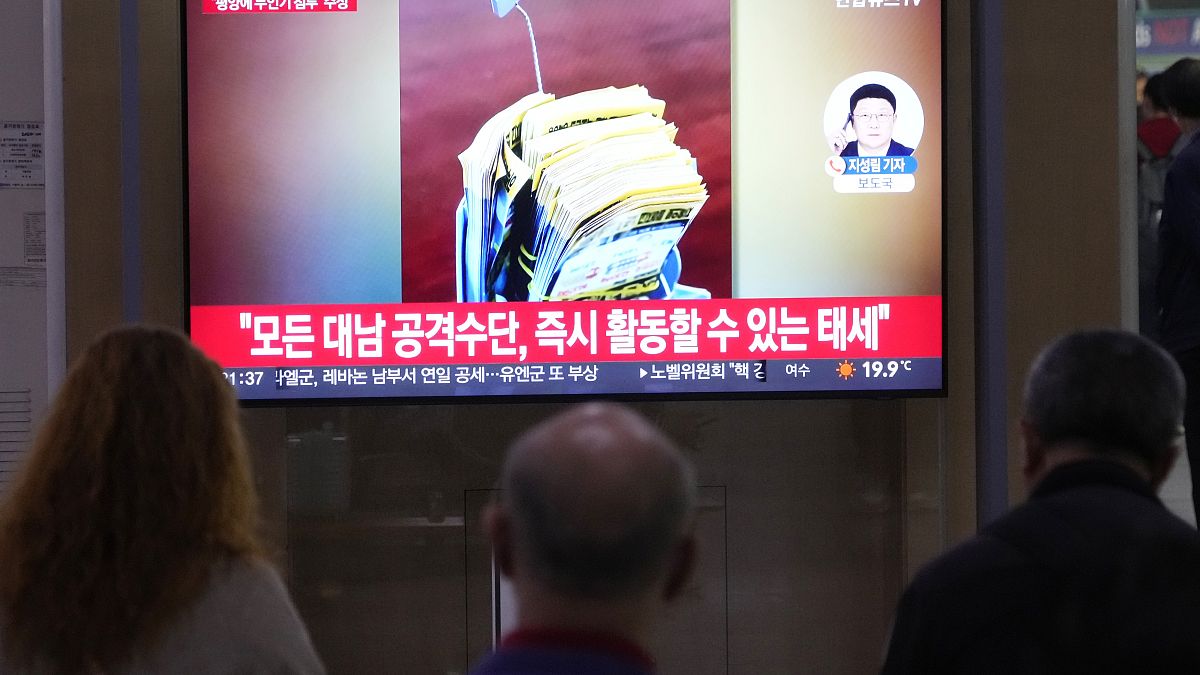Tensions between North and South Korea have been rising as the North continues to accuse the South of sending drones to drop anti-regime propaganda leaflets in its territory. North Korea’s military has warned that it will “completely cut off roads and railways” linking the two countries and has threatened to respond with force if such flights occur again. The North Korean Foreign Ministry described the alleged flights as a dangerous provocation that could lead to armed conflict and war. South Korea has denied the allegations, with the Defence Minister stating that they have not engaged in such activities.
North Korea’s sensitivity to outside criticism of its authoritarian government has led to retaliatory actions such as sending balloons carrying waste to the South and warnings of blocking the border permanently. The South has responded by using border loudspeakers to broadcast propaganda and K-pop to North Korea. These actions have escalated tensions created by weapons tests and threats of nuclear conflict by North Korean leader Kim Jong Un towards Washington and Seoul. The allies have strengthened military exercises and cooperation with Japan while enhancing nuclear deterrence plans.
The North Korean military has announced that it will “completely cut off roads and railways” linking to South Korea and fortify its side with strong defence structures in response to what it perceives as “confrontational hysteria” by the South and US forces. North Korea views these actions as self-defensive measures to inhibit war and defend its security. Experts believe that Kim’s nuclear push is aimed at forcing the United States to accept North Korea as a nuclear power and negotiate security and economic concessions from a position of strength.
As tensions continue to rise between North and South Korea, the potential for armed conflict remains a significant concern. North Korea’s military threats and actions to sever transportation links with the South signal a deteriorating relationship between the two countries. The South’s denial of engaging in activities such as flying drones with propaganda leaflets highlights the challenges of managing communication and diplomatic relations during these tense times. Both countries remain on high alert, with the South warning of retaliation if its citizens’ safety is compromised.
The ongoing psychological warfare campaigns between North and South Korea, including the use of balloons to send messages across the border, have further fueled the already tense situation. North Korea’s retaliatory measures and warnings against its southern neighbor demonstrate its commitment to defending its regime and sovereignty. The South’s efforts to counter these actions through broadcasting propaganda and music reflect its determination to maintain stability and peace in the region. The international community continues to monitor the situation closely and calls for dialogue to de-escalate tensions and prevent any potential conflict.
In conclusion, the escalating tensions between North and South Korea highlight the need for diplomatic efforts to ease the situation and prevent military conflict. Despite North Korea’s threats and actions to cut off transportation links, both countries must engage in constructive dialogue to address their differences and maintain peace on the Korean Peninsula. The international community’s role in mediating disputes and promoting cooperation between the two neighbors is crucial in avoiding any escalation of hostilities. Ultimately, a peaceful resolution to the current crisis is essential for the stability and security of the region.











